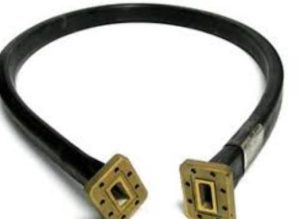What Are Flexible Waveguides Used For?
Flexible waveguides are an essential component in modern RF (Radio Frequency) and microwave systems. These specialized waveguides provide the necessary flexibility to accommodate complex routing and movement, which rigid waveguides cannot achieve. They are crucial in systems where components must be connected over varying distances and alignments without sacrificing performance.

Adapting to System Constraints
Versatile Installation Options
The primary use of flexible waveguides is to facilitate the installation of microwave equipment in spaces where rigid waveguides are impractical. Due to their bendable nature, flexible waveguides can be twisted or bent to fit around obstacles or into tight spaces without significant signal degradation. This adaptability is especially beneficial in crowded system installations, such as satellite systems, radar units, and mobile communication racks.
Maintaining Signal Integrity
Despite their flexibility, these waveguides are designed to maintain excellent signal integrity. They effectively transmit signals within frequency ranges typically from 1 GHz up to 50 GHz, covering most communication and radar bands. Flexible waveguides are engineered to minimize loss, with typical attenuation rates depending on the specific construction and materials but generally remaining competitive with rigid waveguide options.
Applications in Diverse Fields
Aerospace and Defense
In aerospace and defense, flexible waveguides are used extensively. They are critical in the deployment of spacecraft communication systems, where connections between different modules need accommodating movement and temperature shifts. Similarly, in military applications, these waveguides offer robust and reliable performance in mobile radar and communication systems that require frequent reconfigurations.
Broadcast and Telecommunication
Broadcast towers and telecommunication base stations utilize flexible waveguides for antenna feeds and inter-component links. Their ability to bend as needed allows for optimal positioning of antennas, which can significantly enhance signal coverage and quality.
Medical and Scientific Instruments
In the medical field, flexible waveguides find applications in imaging technologies such as MRI machines, where precise and reliable RF transmission is crucial. Similarly, in scientific research, these waveguides enable flexible setups in experiments that involve RF and microwave radiation.
High-Power Handling
Despite their flexible nature, these waveguides are capable of handling significant power levels, making them suitable for high-power applications like satellite transponders and terrestrial broadcast transmitters. Their construction typically involves a corrugated inner conductor surrounded by a flexible, yet durable, outer sheath, which helps in handling higher power outputs without the risk of arcing or overheating.
Durability Under Stress
Flexible waveguides are designed to withstand not only physical bending but also environmental factors such as temperature fluctuations and humidity. Their durability makes them ideal for outdoor applications, as well as in industrial settings where conditions may be harsh.
Flexible Waveguides play a pivotal role in modern RF and microwave systems, providing the essential flexibility, high performance, and reliability needed across various demanding applications. Their ability to adapt to complex installation environments and maintain high-quality signal transmission under diverse conditions makes them indispensable in today’s advanced technological landscape.